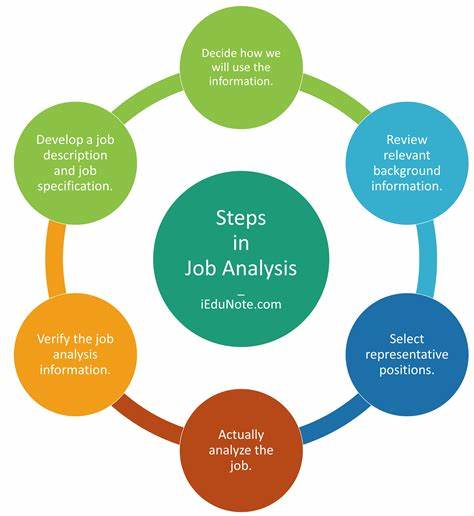Job analysis is a systematic method used to examine and document the work situation in an organization. It serves as an umbrella concept for several sub-analyses, each aimed at understanding different aspects of a job to determine the requirements for successful performance. These analyses collectively form the basis for numerous HR functions, including job evaluation, recruitment, training, and performance management.
Sub-Areas of Job Analysis
According to modern job analysis frameworks, the process includes four core sub-analyses:
-
Task Analysis
Focuses on identifying and breaking down tasks from an organizational perspective. It determines the fundamental activities and associated performance requirements. -
Condition Analysis
Examines the work environment, including the structuring of work processes, tools used, and the conditions under which tasks are completed. -
Role Analysis
Investigates the interpersonal dynamics of a job—how the jobholder interacts with colleagues, supervisors, and external partners. -
Requirements Analysis
Synthesizes findings from the above areas to define the qualification requirements needed for the job. These are often presented as requirements profiles or used in requirements forecasts.
Note: The process is inherently interpretive; qualification criteria are not strictly derived from tasks but often emerge from negotiation among stakeholders.
Methods of Job Analysis
Job analysis methods can be classified into three main categories:
-
Non-standardized methods:
Include job descriptions, free reports from jobholders, document analysis, and direct task performance by analysts. -
Semi-standardized methods:
Include interviews, work diaries, critical incident techniques, and structured observations. -
Standardized methods:
Utilize questionnaires, checklists, and structured interviews to collect consistent data.
These methods are often combined to build a comprehensive understanding of job requirements.
Types of Job Analysis Procedures
-
Non-psychological, technical-ergonomic analyses
Focus on improving workflow efficiency and working conditions, e.g., movement studies, workload assessments, and ergonomic evaluations. -
Psychologically oriented analyses
Aim to describe employee behavior in a structured way and are categorized into:-
Task-oriented approaches:
Use job-holder tasks as the basis (e.g., Supervisor Task Description Questionnaire). -
Behavior-oriented approaches:
Focus on observable behavior (e.g., Position Analysis Questionnaire (PAQ), Ergonomic Procedure for Activity Analysis (AET)). -
Personality-oriented approaches:
Emphasize traits and abilities required for efficient performance.
-
By using a multi-method, multi-perspective approach, job analysis provides the foundation for evidence-based human resource decisions.
« Back to Glossary Index





![15 Employee Offboarding Templates That Save Hours of HR Time [Free Downloads] 15 Employee Offboarding Templates That Save Hours of HR Time [Free Downloads]](https://i1.wp.com/www.hrcloud.com/hubfs/Header.png?w=150&resize=150,100&ssl=1)
